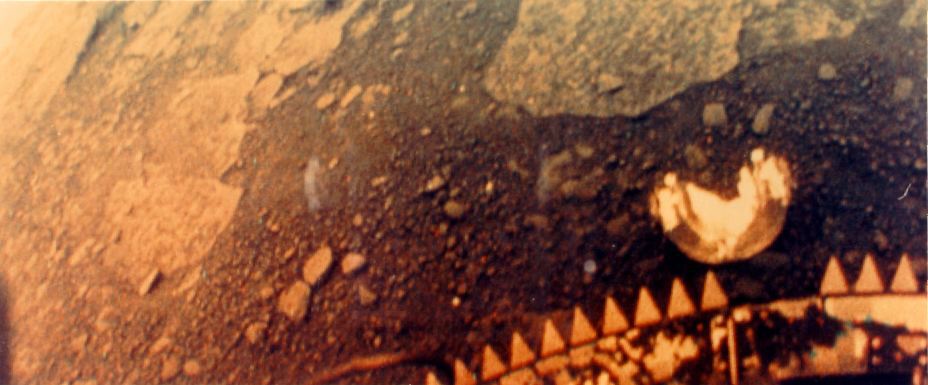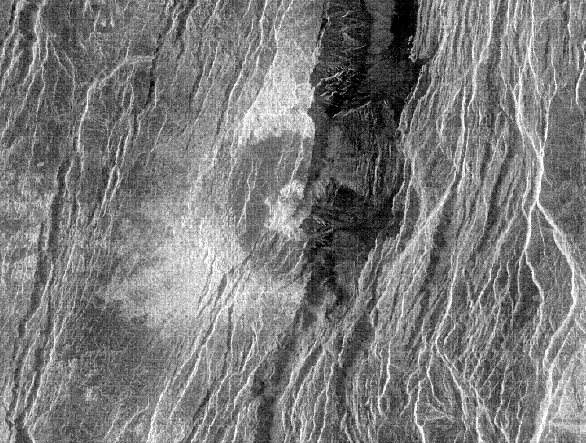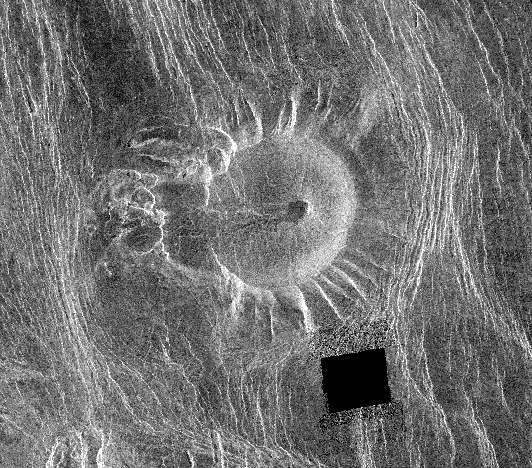The Surface of Venus
We have a view from the Venera lander.
We have a topographic map by radar altimetry.
We have views made by the Magellan spacecraft made with radar.
- In some images we see radar shadows, from side illumination.
- Some materials are "radar bright" and some don't reflect
the radar waves well.
- In a few images, radar altimetry is combined by the radar
brightness images to produce perspective views, usually with
vertical exageration.
Hear is a topographic map of (part of) Earth.

Here is a topographic map of Venus.

- We do see continents, but they do not seem to be pushed together
like those on Earth.
- We do not see mid-ocean ridges.
- Thus it looks as though Venus does not have
plate tectonics.
- On the other hand it does have tectonics (movements of the
crust): we can see faults.
- Notice the blue lines in Aphrodite Terra.
Here is what the surface looks like.

The orange color is because of Venus's atmosphere.
Venus has impact craters. Here is a a crater about 30 km in
diameter.

The radar bright material is interpreted as the rocks
ejected from the crater.
Here are three craters of about the same size.

Here is a crater that was broken by a fault.

Illumination is from the left.
Venus has volcanos.
Here for your amusement are some little "pancake" volcanos:

Here is one that looks like a tick.

Note the lava flow on the northwest.
Here is a big volcano,
Sapas Mons
showing extensive lava flows.
Here is a perspective view of the volcano
Sif Mons. (Generated by computer using radar brightness and
altitude data.) Here is another view .
Comparison to Earth:
- Similar on having a hot interior and convective motions.
- But does not seem to have plate tectonics.
ASTR 121 Home
Davison E. Soper, Institute of Theoretical Science,
University of Oregon, Eugene OR 97403 USA
soper@bovine.uoregon.edu








